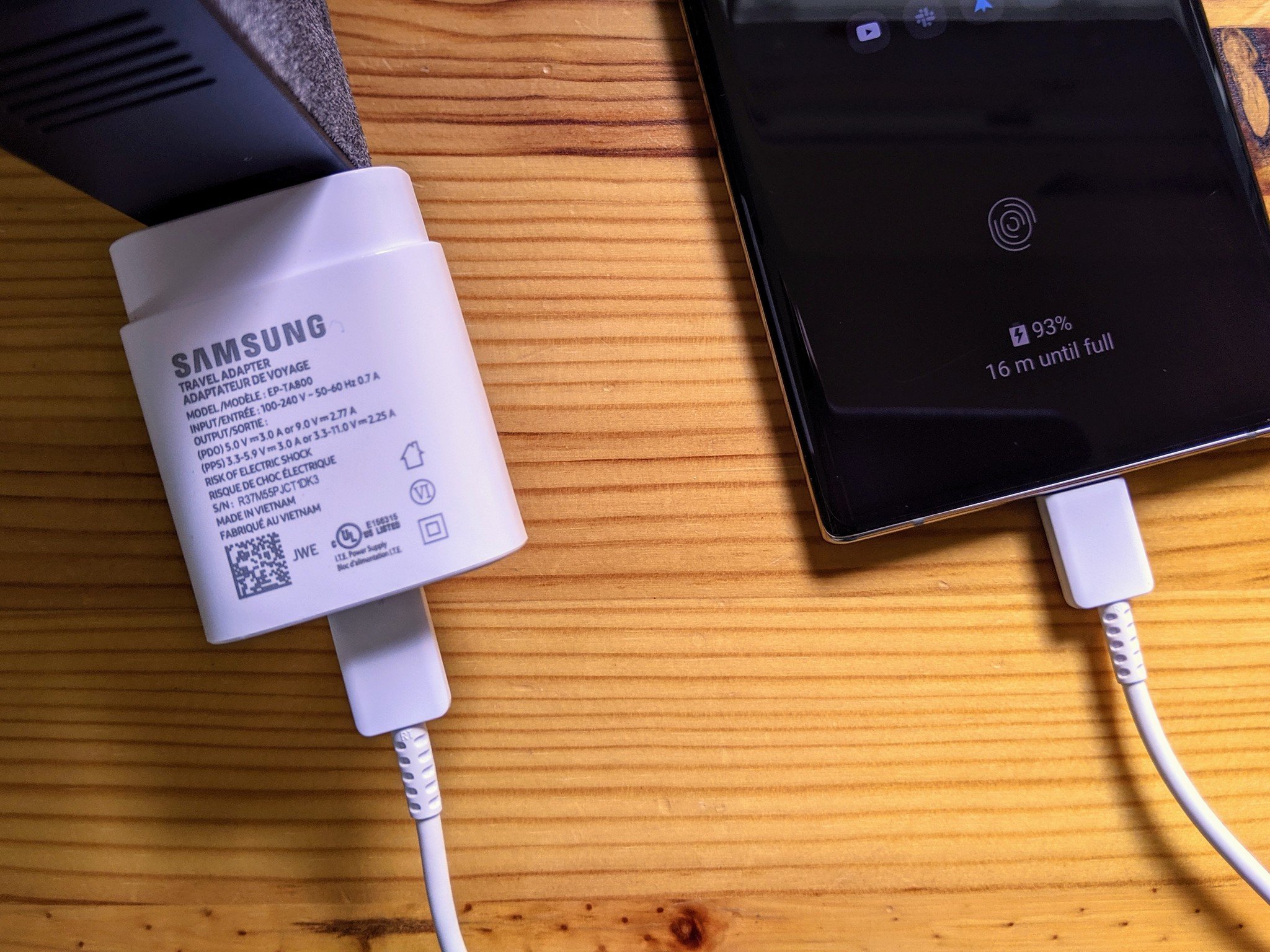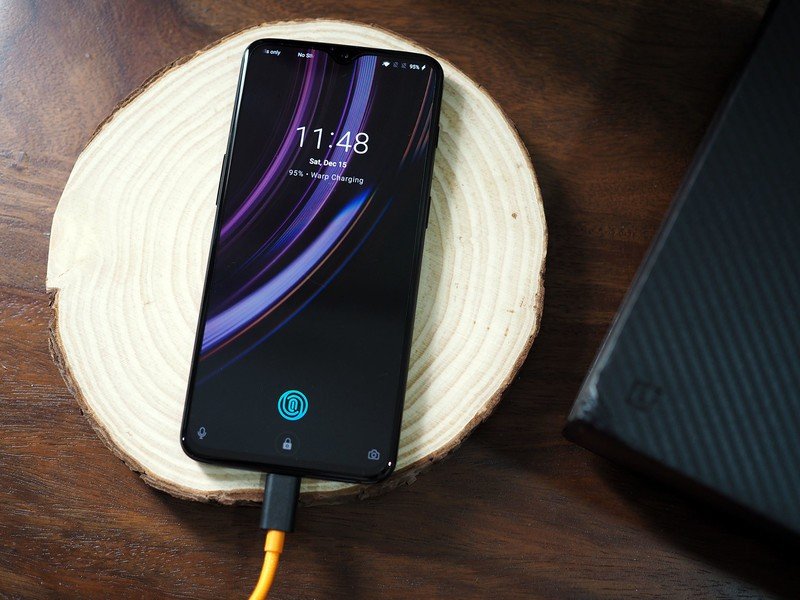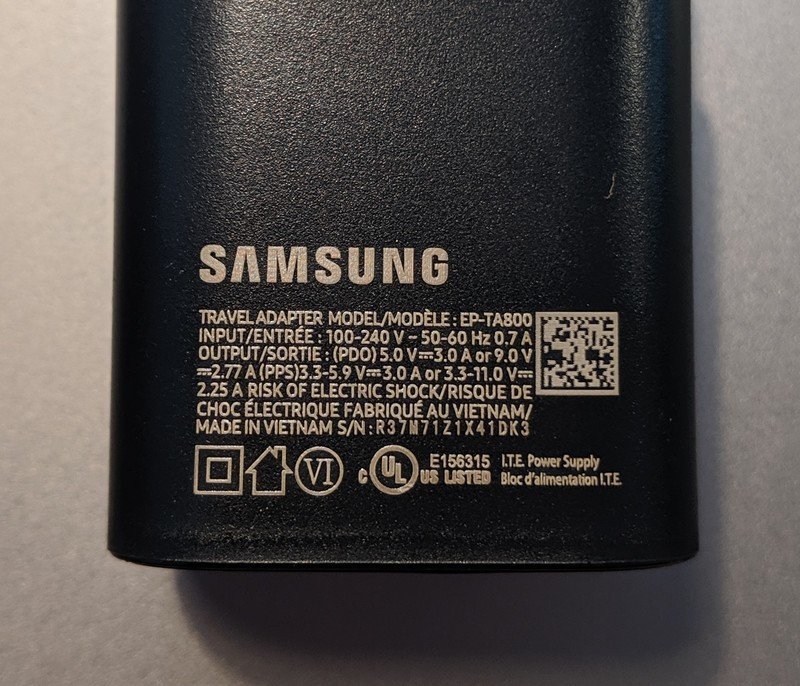From the Editor's Desk: Charging an arm and a leg (and a Note 10+)

I'm fascinated by batteries. The very idea of a battery is interesting: this silent, static object that holds within it power, electricity — light, movement, energy. Batteries, especially rechargeable ones, are fascinating because they are both simple — stored energy released as components need them, and then filled back up through another source — and incredibly complex. The very makeup of today's modern lithium-ion battery is something to behold, and requires a considerable amount of engineering prowess to install safely into a product like a phone.
I'm thinking about batteries this week because of the Galaxy Note 10+, which is the first phone to use the burgeoning and increasingly widely-used USB-PD standard to hit peak charging speeds of 45 watts. To most people, the size of a battery matters more than the speed at which it recharges, but capacity is just one of the three pillars that makes up one's smartphone uptime experience, the other two being discharge rate (the rate at which the components and the operating system consume energy), and recharge rate (the speed at which the battery can fill up again).
Samsung doesn't want another Note 7 disaster, which is why it's prioritizing safety as it markets super fast charging.
To date, most high-speed charging solutions have used proprietary standards developed by the companies that sell the phone; that way they have more control over how the wall adapter that creates the current, and the cable that carries it, interact with the battery. The two most well-known standards are Huawei's SuperCharge, which reached 40 watts this year with the P30 Pro, and OPPO's Super VOOC, which pushes 50 watts. OnePlus's Warp Charge, an offshoot of OPPO's solution, hit 30W this year with the OnePlus 7 Pro.
Of course, there are caveats with all of these solutions. SuperCharge requires a specialized AC adapter and cable, and the charger itself is considerably larger than what you may be used to with older phones from a few years ago that topped out at 10 watts. OPPO's SuperCharge goes even further, dividing the phone's battery itself into two cells so it can accelerate top-up speeds by working independently.

There are other fast charging solutions, of course, which brings us to Samsung. Until this year's Galaxy S10 5G, all of its phones maxed out at 15W and used an offshoot of Qualcomm's Quick Charge 2.0 standard called Fast Adaptive Charging. The Galaxy S10 5G introduced 25W charging, nearly halving the time it took to top up the phone, but to my (and perhaps your) chagrin it wasn't available on the other S10 devices. But to reach those speeds, it also required Samsung's own charger and cable.
So now we're talking about the Note 10 and 10+. While the Note 10 supports charging speeds of 25W, and the Note 10+ 45W, they have now standardized on the widely-used USB-C standard, which technically means it should be easy to find third-party chargers to help it hit those high speeds. Alas, that's not the case — at least not yet. Likely due to concerns around battery temperature and safety (something the company has a vested interest in upholding), both phones can only reach their respective maximum charging speeds using a little-known subset of the USB Power Delivery standard called PPS, or Programmable Power Supply. As I explain in this article, PPS makes it possible to alter the default voltage and amperage that the USB-PD standard supports — typically 5V/3A or 9V/2A.
Not to get too technical, but PPS tries to minimize power loss, and thus heat, by slowly increasing the voltage and decreasing the amperage of the charge as the phone climbs towards 100%. The 25W charger that comes in the box of both the Note 10 and Note 10+ reaches 11V/2.25A, which equals 24.75W (you calculate wattage by multiplying the voltage by the amperage). The 45W Super Fast Charge adapter, which costs $50 directly from Samsung, presumably goes as high as 15V/3A to hit those crazy charging speeds, but no one has one yet to verify.
Be an expert in 5 minutes
Get the latest news from Android Central, your trusted companion in the world of Android
Following up on this and it looks like you need both a PPS charger *and* an e-marked USB-C cable (one that supports USB 3.1 Gen 2) to get max speeds (25W seen below)
I tried a bunch of my more robust USB-C cables with the 25W OEM charger and it still maxes at 13.5W. pic.twitter.com/qiTORRymniFollowing up on this and it looks like you need both a PPS charger *and* an e-marked USB-C cable (one that supports USB 3.1 Gen 2) to get max speeds (25W seen below)
I tried a bunch of my more robust USB-C cables with the 25W OEM charger and it still maxes at 13.5W. pic.twitter.com/qiTORRymni— Daniel Bader (@journeydan) August 16, 2019August 16, 2019
I spent part of my Friday experimenting with charging my Note 10+, trying to figure out whether there are any ways the device could hit those 45W speeds without Samsung's first-party charger. I have USB-PD chargers from Anker, Aukey, RAVPower, Huawei, Mophie and more, and while many of them technically support 45W power delivery, using a voltmeter I determined that none of them could get the Note 10+ to charge faster than 15W.
I then used Samsung's in-box charger with the in-box cable and promptly hit 25W charging. But when I swapped out the cable for another one, the one that came with my Huawei Matebook X Pro, it dropped back down to 15W. Turns out that in addition to needing a PPS-capable wall adapter, you also need an e-marked USB-C cable. Again, without getting too technical, that's a cable that's certified to transfer wattage up to 100W and speeds up to 10Gbps as based on the latest USB 3.1 Gen 2 standard. The problem is that you can't tell whether a cable is e-marked just by looking at it. While there's a tiny chip on the inside of the cable near the plug, you probably don't want to have to take apart your cable to check.

So how can you tell? E-mark isn't a brand or a feature, it's just a necessity of the USB 3.1 Gen 2 standard, so you're going to want to look for USB-C to C cables that are rated for 10Gbps transfer speeds — those must be e-marked to be certified. They may cost a bit more but they're worth it. (All of Apple's C-C cables are e-marked, for what it's worth.)
As for adapters, you won't find a lot of PPS-capable chargers yet. The standard is still very new and companies haven't prioritized them because until now there haven't been any major products to require it. Expect that to change in the near future. In the meantime, you can pre-order Samsung's own 45W USB-C adapter, and use the cable that came in the box, to reach those crazy speeds. You should be able to go from 0-100% in around 40 minutes.
So here we are, with Samsung technically supporting an open charging standard after all these years, one that enables super fast charging at that, but it's so ahead of its time that the industry hasn't caught up yet. It's better than walling off the phone to a proprietary standard, for sure, but still frustrating nonetheless. Thanks to Android Police for doing a lot of the legwork on this story.
Here's what else is going on this week:
- Speaking of batteries, Apple caused a bit of a firestorm by acknowledging that third-party battery installs are considered "unauthorized repairs" and has begun blocking access to the new battery health section of iOS. The company says it's doing this to ensure the safety of its users, since batteries from non-approved sources have the potential to be lower quality and even dangerous. Still, there's an argument that once you buy a phone it's your property to do with what you like, and this appears to be battery DRM.
- The T-Mobile/Sprint merger is chugging along and is expected to be approved in the coming weeks. In the short-term it could be a boon for customers; in the long-run, though, unless the newly-leveraged Dish can pull a facilities-based rabbit out of its hat, US consumers are in for a rude price awakening. Take it from this overpaying Canadian.
- Huawei's been given another 90-day reprieve to purchase components and renew IP from U.S. companies. The deal was expected to expire tomorrow, so this last-minute deal lets them work into November. Is the Commerce Department just going to keep kicking this can down the road? Sure hope we see some resolution soon.
Thanks for reading and I hope you have an excellent Sunday!
-Daniel
Daniel Bader was a former Android Central Editor-in-Chief and Executive Editor for iMore and Windows Central.

